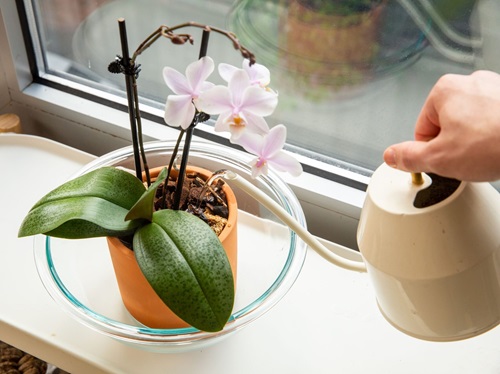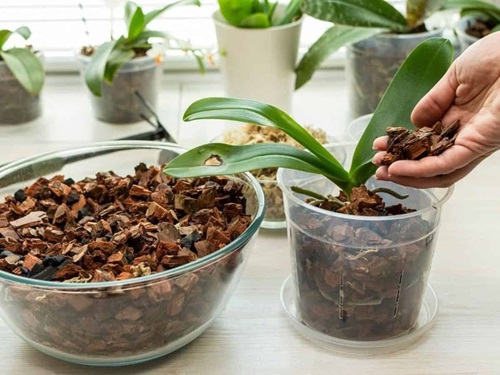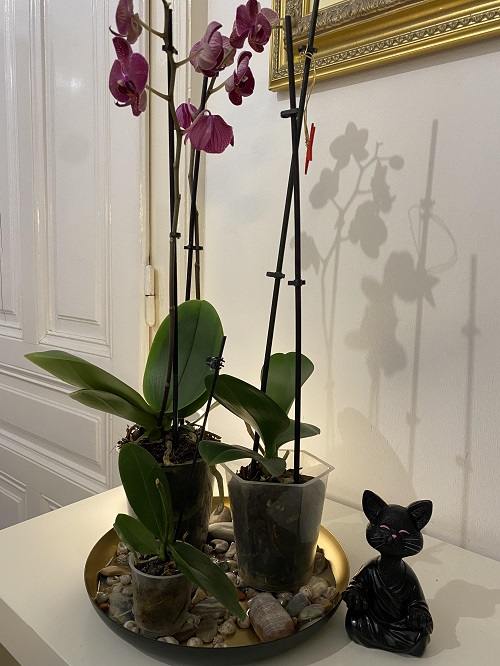Getting an orchid is easy—the real challenge lies in making it last and flower prolifically! These Life Hacks for Long-Lasting Orchid Plants will help.
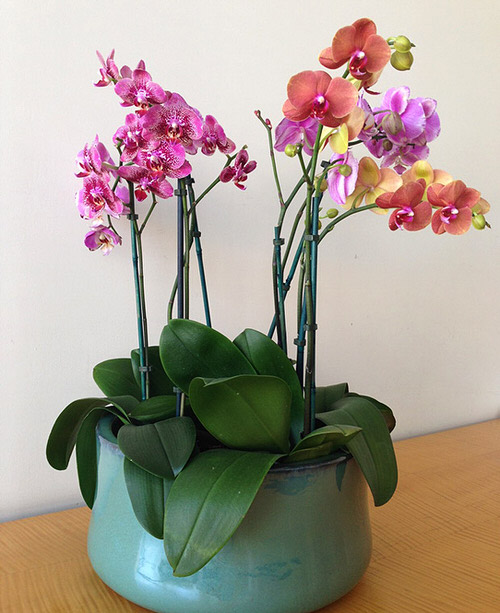
Orchids typically live for 15 years indoors, but you can push that even further with our quintessential tricks from years of experience! With these life hacks, not only you’ll get long-lasting orchid plants, but they’ll also flower more in your home.
Life Hacks for Long-Lasting Orchid Plants
1. Don’t Cut the Spike Unless It’s Dead
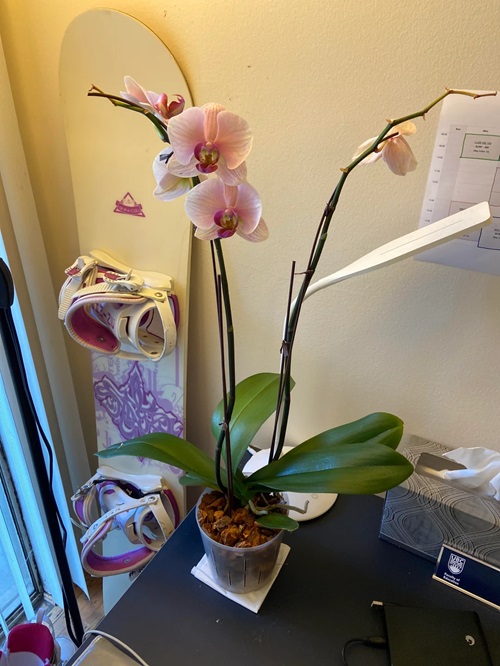
Why start from scratch if you already have a readymade base? Here’s what you do—avoid cutting the flower spike down entirely once the blooming season is complete. Instead, trim it just above a node, about halfway up the spike, to get your orchid to bloom a second time.
This helps the orchid conserve energy and allows it to focus only on growing the trimmed portion rather than forming an entirely new spike. This hack encourages the plant to produce a second round of blooms from the same spike!
Note: If the spike turns brown or appears dead, cut it back entirely to the base. It will not produce new flowers anymore. If you won’t, the plant will simply spend its resources trying to save a spent spike.
2. Use an Orchid Fertilizer
Orchids are sensitive to fertilizers. Use the nutritional treatment wisely, or else you will have a chemically scorched plant and no blooms!
Apply a balanced liquid fertilizer like 20-20-20 or a high phosphorus feed like 10-30-20 at one-quarter strength once every 2-3 weeks during the growing season.
Another excellent way to increase the vigor and appearance of your orchid is to follow a weekly weakly system, which is followed by many pro orchid growers.
Feed your orchid a low strength every week, such as 1/8, 1/6, or 1/4 of the recommended strength by your fertilizer manufacturer. To find the right dose, start with the weakest strength, 1/8 of the suggested potency, then increase up to 1/4.
Either reduce or avoid feeding your orchid during its dormant phase or when it’s not growing actively. If you see light growth during this time, fertilize once a month with one-quarter strength balanced feed.
3. Flush Away the Salts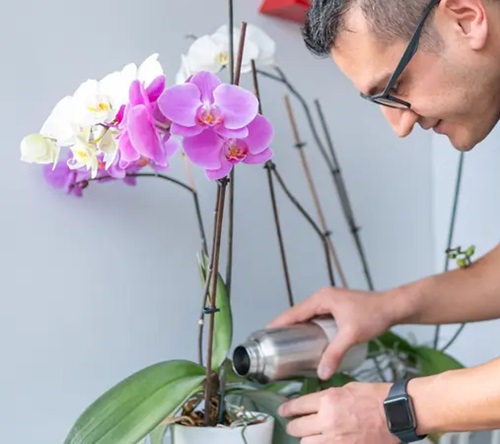
If you overfertilize, salts build up in the soil. This eventually causes root burn and upsets the soil’s nutritional balance. Too much feeding also invites a host of pests and insects and makes the plant vulnerable to infection.
You need to flush away excessive fertilizers from the soil every 4-6 weeks:
First, water your plant as usual to loosen the build-up and solidified salts. Next, pour tepid water for 2-3 minutes and ensure it drains fully. Aim for 3-5 liters of water per pot to leach out salt buildup, and do not let it clog.
Ensure the pot has sufficient holes at the bottom to allow proper drainage. Once complete, allow the medium to dry out slightly for a few days before watering again.
Tip: Remember not to fertilize the plant for a week after the flushing out process so that it can stabilize and adapt to the new nutrient concentration and get a good grip on its roots.
4. Go With Transparent Pots
Our next life hack for long-lasting orchids is transparency. How better to identify a problem than to spot it with the naked eye? We recommend see-through containers that allow you to monitor root formation and growth.
A cool trait of orchids is that they give you visual cues if and when they need watering. The roots turn green when wet and silver/white when dry. Being able to see this color change helps you water the plant efficiently. It can also show if the plant is root-bound or infected.
Clear plastic pots with drainage holes are great alternatives, but if you’re looking for something better-looking, go for glass containers! Switch up the style with mason jars, crystal vases, and anything else you can find that’s clear, but ensure the bottom of the pot has seepage.
5. Pay Attention to Water
It’s all in the water! We can’t stress enough about watering when it comes to long-lasting orchids. These tropical plants may tolerate tap water, but it often contains salts and chlorine, and we already know they are sensitive to salt build-ups.
Instead, water your orchid using distilled, reverse osmosis, filtered, or rainwater. These have less to no salt and chlorine, perfect for our sensitive floral divas. And stick to room-temperature water. It shouldn’t be too hot or cold, or it’ll shock the roots.
6. Tweak Temperature for Reblooming
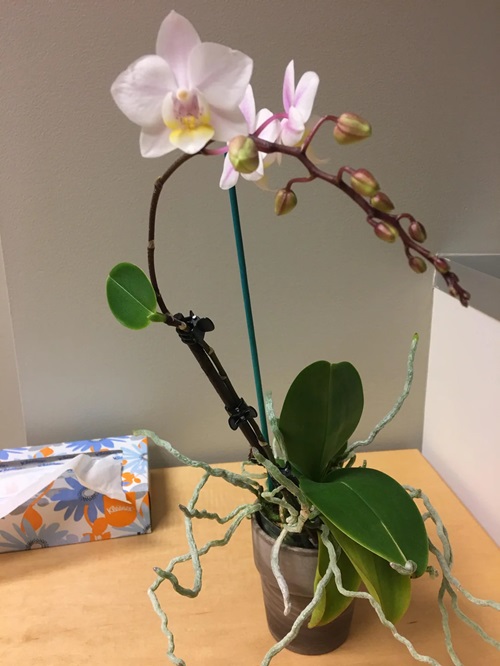
Fooling the plant to rebloom is our favorite life hack to boost indoor orchid longevity and get more flowers. Tweak the temperature to match the plant’s required temp to bloom. We’re looking at 68-80 F (20-27 C) during the daytime and a temperature drop of 10-15 F (5-8 C) at night, which would be around 55-65 F (13-18 C).
Keep it in this range for 2-4 weeks, especially in the fall. If you live in a warm climate, you can do this in either late fall or early winter. This mimics the orchid’s natural environment and can trigger new flower spikes. And here are a few more tricks to keep your orchids blooming.
7. Allow Orchid Roots to Breathe
Poor air circulation is one of the biggest orchid killers. A clogged or soggy potting mix breeds fungal infections and pests and prevents the roots from functioning properly. To avoid this, whip up a potting medium that keeps your orchids happy!
Use a medium to coarse grade bark-based mix or a specialized orchid blend that allows air to reach the roots. To improve texture of your orchid mix, also, add small chips of coconut husk, and consider including a little amount of sphagnum moss (about 10 percent of the mix) for moisture retention.
8. Keep Orchids Humid
Moth orchids are suckers for humidity. They thrive in moderate to high humidity—50-70%. And simply misting the plant just won’t provide the lasting moisture in air they need! Not to forget how it causes fungal infections and mold growth due to the water that sits stagnant for hours on blooms and leaves.
Instead, use a humidifier to maintain consistency without wetting the leaves or flowers. Humidifiers are an excellent investment for houseplant owners—they offer all the benefits without the drawbacks.
You can also make a DIY humidity tray for your orchid by placing a shallow tray with pebbles and water beneath the pot. As the water evaporates, it boosts humidity. Just ensure the water level does not come into direct contact with your orchid pot.
9. Cinnamon for Long-Lasting Orchid Plants
Since orchids thrive in humid conditions, they are prone to fungal attacks. What can you do to stop this? The answer is in your kitchen—cinnamon! You can use cinnamon’s natural antifungal properties to your benefit.
Watering the plant with cinnamon tea every once in a while or even dusting the surface of the potting mix with cinnamon powder will help. You can also use the powder directly on exposed spots on the plants after pruning. Just be careful not to overuse cinnamon, as excessive amounts can dry out orchid roots.
10. Do Ice Cubes Watering

We just discussed to use lukewarm water, and now we’ve jumped into icy terrain! But hear us out. Placing 3-4 ice cubes once a week on the medium’s surface and letting them melt slowly will act as a makeshift drip irrigation method.
This slow process will prevent waterlogging and its subsequent root rot! But remember never to place the ice cubes directly on the roots, nor should you use ice-cold water for hydration. Simply place it on the surface of the substrate and do no more!
Caution: Use the ice cube hack only when you’re not sure about how to water your orchid plant as this is more of a convenient method for busy and beginner orchid growers!
11. Do This in Dormancy
Would you poke a bear out of hibernation? Similarly, orchids do not appreciate being disturbed during their dormant period. They are resting to produce the glorious blooms that you enjoy so very much. So don’t be restless, and do not disturb!
Allow the plant to cool down and take a break, reduce watering, just enough to keep roots slightly moist. Move the plant to a spot with dappled sunshine and keep temperatures around 60-65 F (15-18 C) at night and no warmer than 75 F (24 C) during the day.
During this time, don’t fertilize or do any repotting. This inactive period usually lasts 6-8 weeks and usually occurs around late fall, triggered by shorter days. You may even notice signs like no fresh growth or even leaf drop, but that’s normal.



